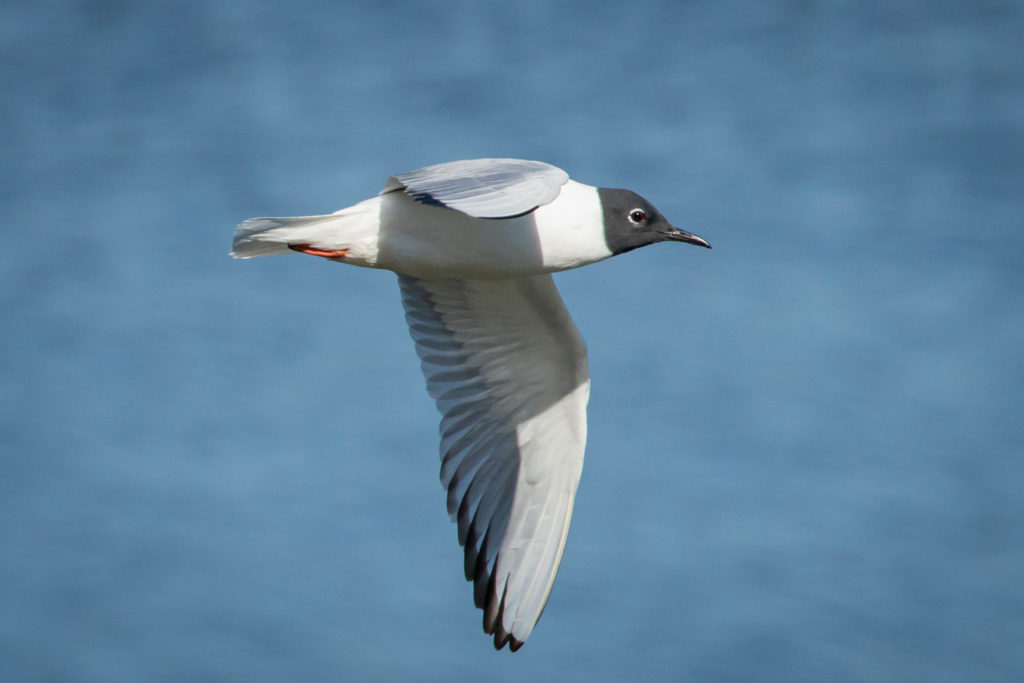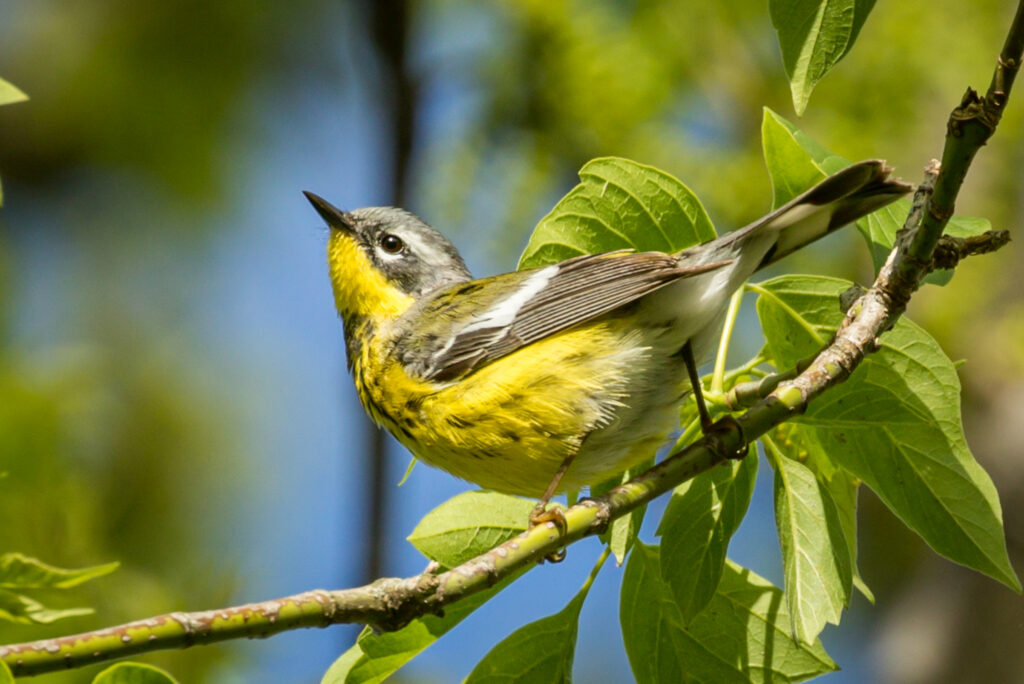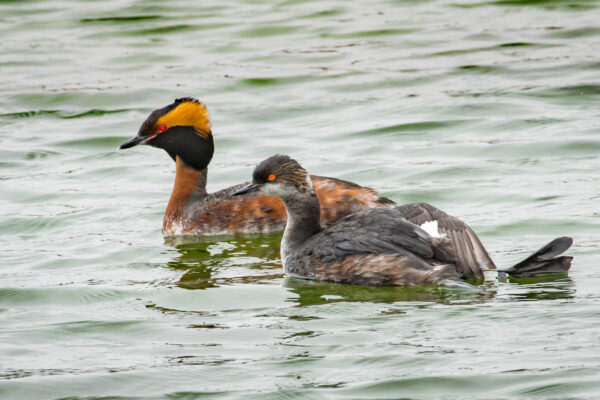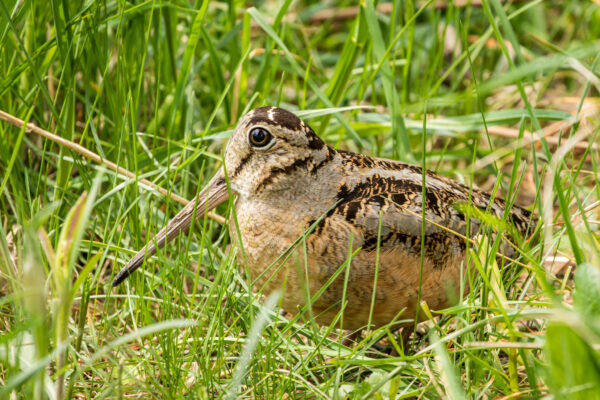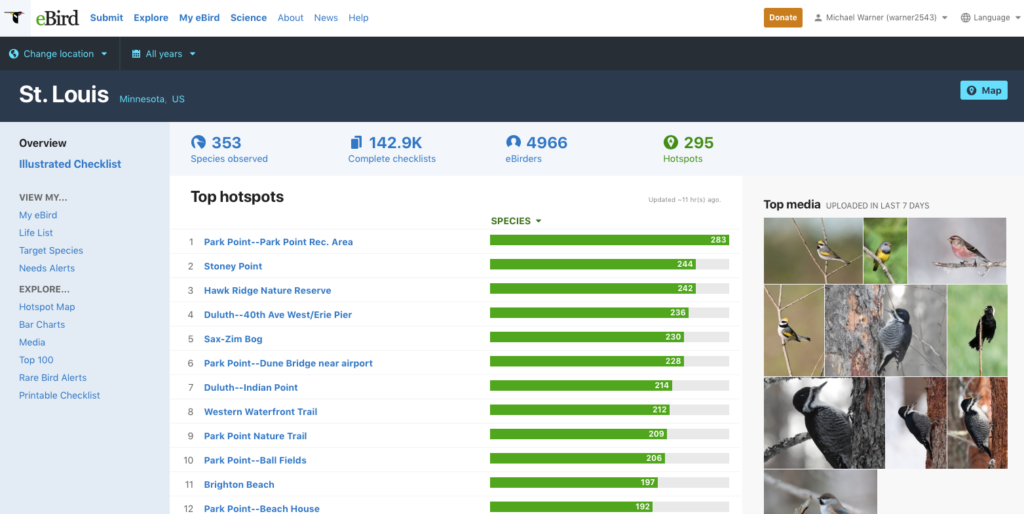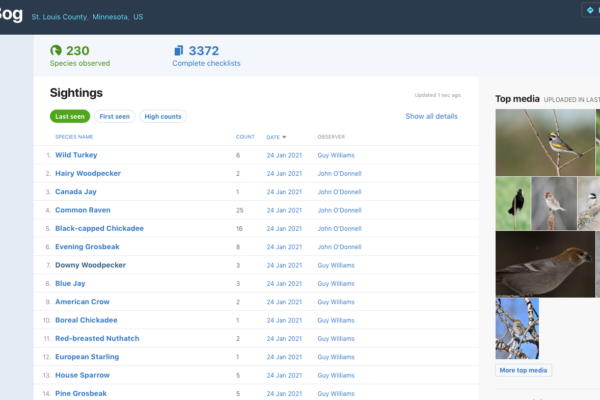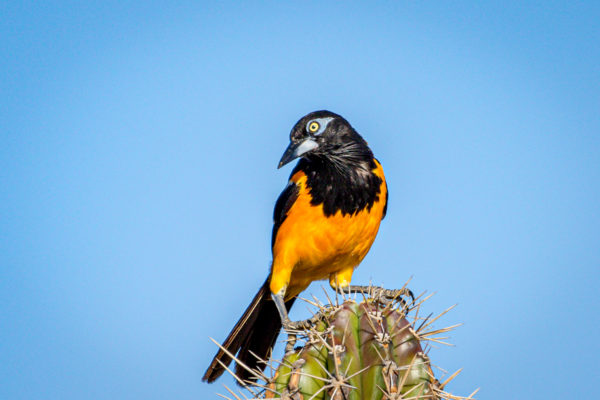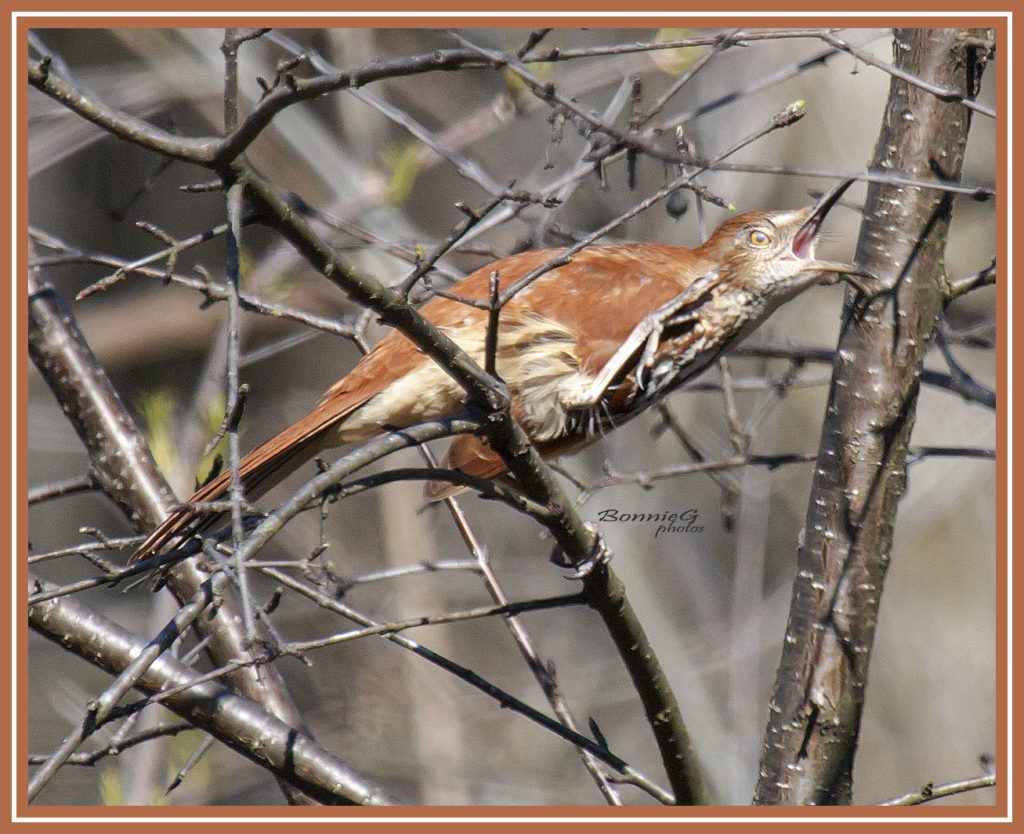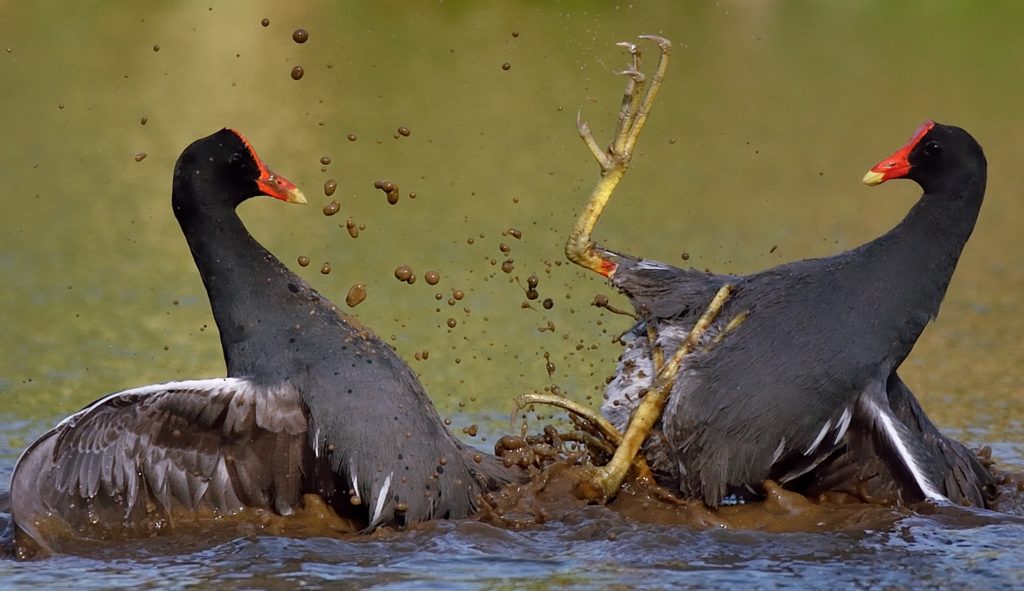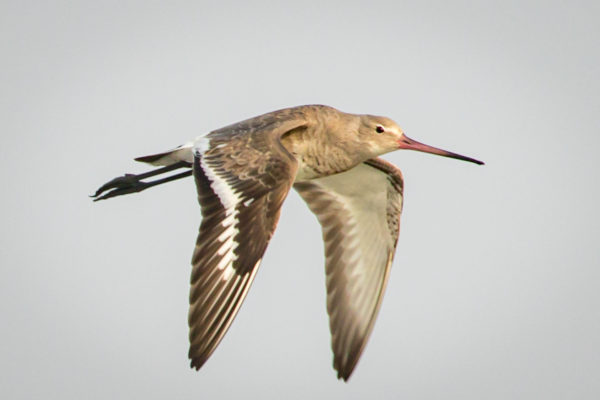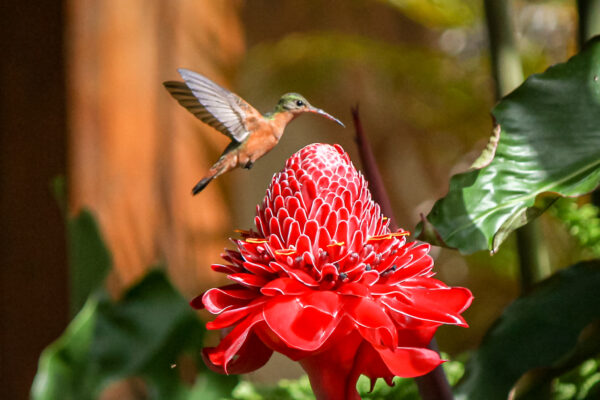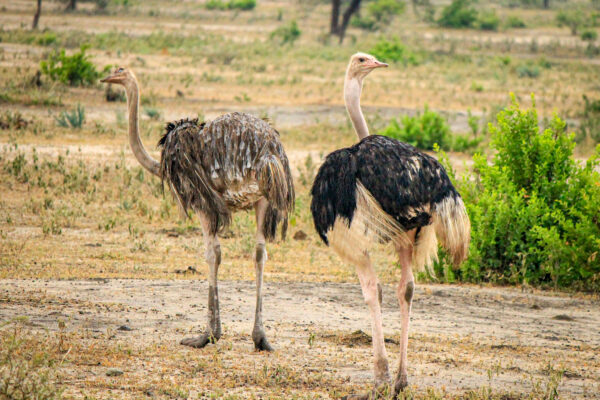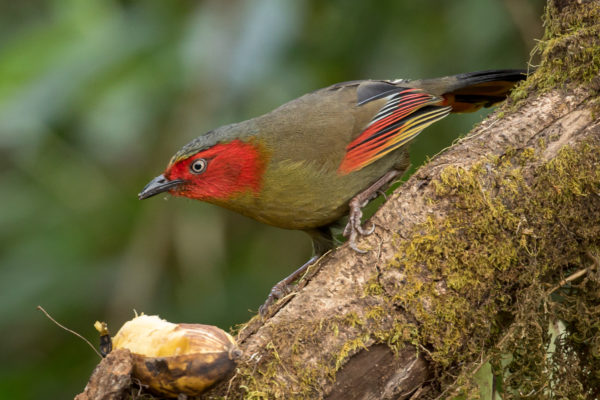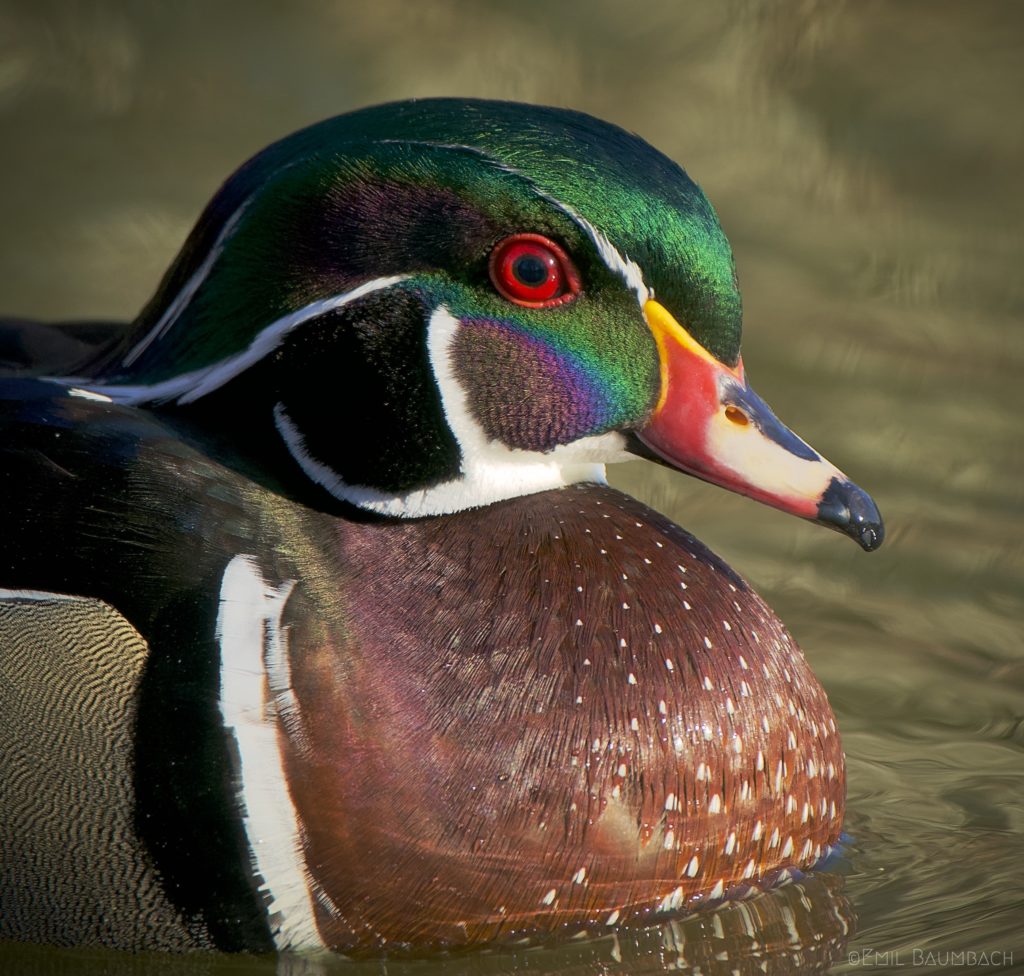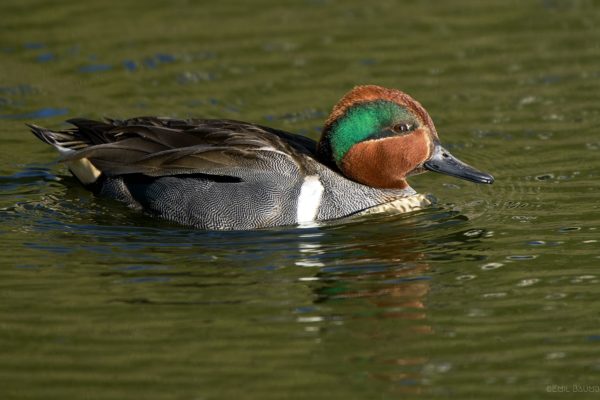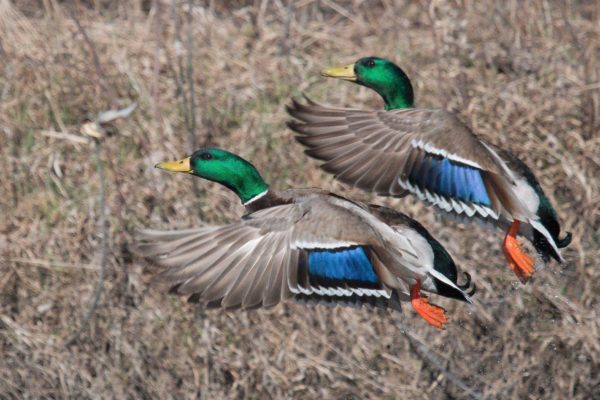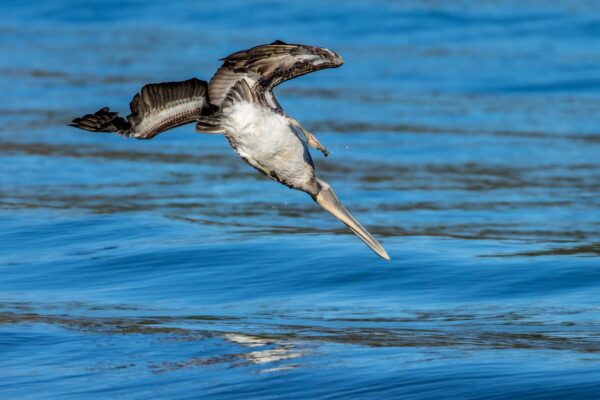Bird watching has had an uptick in interest lately, especially during the pandemic. People with Quarantine Fatigue or Cabin Fever are getting out more and taking walks. If you’re one of those people and want to do more than just take a stroll through the park I invite you to try bird watching. In fact I’ll give you 10 reasons you should go out looking for birds. Read on to see how birding is actually more than just a pastime – it’s good for you!
1. Birding Together – Birding For Life
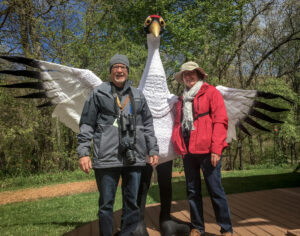 Birding is a phenomenal activity for couples and I’m surprised there aren’t more of them out on the trail. In fact, I would estimate that only one out of ten birders we encounter are couples. Karen and I enjoy planning each bird outing together. What’s new and exciting to see out there? Where are they and how far do we have to travel to get there (or more importantly, what time do we have to get up in the morning to get there?). What equipment will we need (mucking boots, scope, water bottle, Diet Coke, almonds, PB&J, sunscreen, Hot Hands)?
Birding is a phenomenal activity for couples and I’m surprised there aren’t more of them out on the trail. In fact, I would estimate that only one out of ten birders we encounter are couples. Karen and I enjoy planning each bird outing together. What’s new and exciting to see out there? Where are they and how far do we have to travel to get there (or more importantly, what time do we have to get up in the morning to get there?). What equipment will we need (mucking boots, scope, water bottle, Diet Coke, almonds, PB&J, sunscreen, Hot Hands)?
Four eyes are better than two. Once we arrive at the birding site we begin scanning the area for what’s out there, starting right in the parking lot. We work together as a team to identify any unfamiliar birds we see along the way; Karen pulls up an App while I display pictures of the bird on my camera and we cross-reference them with our observations. We collaborate at the end each birding experience to complete an eBird Checklist and make sure we input an accurate count for every species seen. Back home we review all the pictures and decide which ones we want to upload to our eBird checklists and to GreatBirdPics.com. The fact is we spend a lot of quality time together before, during, and after birding.
To extend that thought, birding is a life-long activity. I get a kick out of being on a bird walk with kids who know the birds better than I do (“young” ears and eyes are a distinct advantage). As I approach my 70’s I plan on continuing to go out birding with Karen as long as I can stand and walk – and even when I can’t do that, there are plenty of birds right out in the backyard.
So grab your partner, go out there and start birding!
2. Birding Can Fit Your Lifestyle
![]() Once you start birding you will find that this is one activity you can adjust to your time, energy, and pocketbook:
Once you start birding you will find that this is one activity you can adjust to your time, energy, and pocketbook:
- You can go out searching for birds as often as you want. There is no minimum or maximum time spent in birding. When you go out you can spend 10 minutes or 10 hours. You decide when to go home.
- You determine where you want to go and when. Not an early riser? Sleep in and go birding later in the day. Too hot or cold out today? That’s fine, you can search for birds while sitting in your house looking out into your backyard.
- You decide how much you want to spend on equipment. Do you have an old pair of binoculars around? That’s fine. Want to go out and spend $2,000 on a fancy scope? Great if you can afford it. You can buy a bookcase of bird books or do your research online.
- You can go birding starting when you’re young and continue until you’re old. Kids love to be outside with their parents and birding can give that excursion an exciting activity along the way. On the other hand I was recently birding at a park and an elderly lady in a wheelchair was there on the trail, with the help of her daughter.
Birding is one of those activities that you can do as much or little as you want. Start just by observing and identifying the birds in your backyard. Then take a hike with your binoculars.
3. Birding Connects You With Nature
 Some time during each birding expedition I’ll stop, look around, and marvel at the sights, sounds, and scents of nature around me. Be it a wooded forest, a sandy beach along the ocean, a stream bubbling by, a marsh filled with cattails, or a half frozen channel each place elicits in me a sense of awe and wonder. I feel blessed to be able to go and explore these works of nature.
Some time during each birding expedition I’ll stop, look around, and marvel at the sights, sounds, and scents of nature around me. Be it a wooded forest, a sandy beach along the ocean, a stream bubbling by, a marsh filled with cattails, or a half frozen channel each place elicits in me a sense of awe and wonder. I feel blessed to be able to go and explore these works of nature.
The truth is, when you are outdoors, you don’t see birds all the time but you are always somewhere that is is visually striking: like the sun rising up over the mountains in Thailand, or the waves crashing down on the beach in Holland, Michigan during a winter squall, or an explosion of bright yellow daisies with Goldfinches flitting from stalk to flower in a meadow just off the trail. Walking through a stand of pines I’ll search for the scent of the trees wafting though the air around me. As I walk through the woods I listen for birds but I also hear insects chirping, squirrels barking, and the trees groaning as they sway in the breeze.
Birding has brought me closer to nature in ways I never imagined. Being out walking for two or three hours has given me an opportunity to experience weather like I never had before. BB (Before Birding) the weather tended to be a hindrance to what I wanted to do: Was it too hot to play golf? How wet would I get if I made a dash for the car in the middle of a rainstorm? Will I be shoveling snow tomorrow? Now, when out birding for an extended period of time I see the sun gradually burn off the haze of the morning. I feel the warmth of the dawn chase off the chills of the early morning. I watch a cold front being announced by a line of clouds slowly advancing their way toward me and feel the air cool off just before those clouds arrive overhead. When out at dusk searching for Short-eared Owls I feel the sudden drop in temperature when the sun drifts below the horizon.
Birding is but one of many outdoor activities that can connect you with nature – but birding facilitates that connection better than most. The act of birding is accomplished when you watch and listen for just one niche in the entirety of nature which surrounds us – birds. Extend those observations beyond the birds and use of all your senses to experience nature as you never have before.
4. Birding Helps You Get (Some) Exercise
 Birding gets you outside and walking. A typical birding expedition for us is about 2 – 3 hours long, but we have been out on our feet 6 hours in search of birds. To be fair, birding is not typically an aerobic exercise unless you are trekking up and down steep paths in search of birds found at higher elevations. However for a typical adult, walking burns about 300 calories per hour so there are some heath benefits to birding. On slow birding days we pick up our pace when walking to raise our heart rate. You probably know some of the main benefits of walking (reduced risk of chronic heart disease; improve your mood; improve digestion) but in addition to those well-known benefits Harvard Medical School published 5 Surprising Benefits of Walking which included:
Birding gets you outside and walking. A typical birding expedition for us is about 2 – 3 hours long, but we have been out on our feet 6 hours in search of birds. To be fair, birding is not typically an aerobic exercise unless you are trekking up and down steep paths in search of birds found at higher elevations. However for a typical adult, walking burns about 300 calories per hour so there are some heath benefits to birding. On slow birding days we pick up our pace when walking to raise our heart rate. You probably know some of the main benefits of walking (reduced risk of chronic heart disease; improve your mood; improve digestion) but in addition to those well-known benefits Harvard Medical School published 5 Surprising Benefits of Walking which included:
- It counteracts the effects of weight-producing genes.
- It helps tame a sweet tooth.
- It reduces the risk of developing breast cancer.
- It eases joint pain.
- It boosts immune function.
So be a birder – get out there and take a hike!
5. Birding Is Good For Your Brain
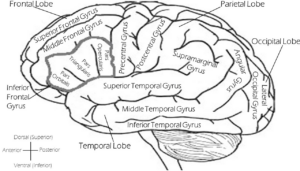 Birding is an excellent way to stimulate your brain. Of course just going out and getting some fresh air and walking about does wonders to clear the ole cobwebs, but when you’re out and birding you’re constantly working your brain as you see and hear birds and then interpret those sensory inputs. Sometimes you need to verbalize spacial information to those around you. As we will see birding stimulates many different parts of the brain.
Birding is an excellent way to stimulate your brain. Of course just going out and getting some fresh air and walking about does wonders to clear the ole cobwebs, but when you’re out and birding you’re constantly working your brain as you see and hear birds and then interpret those sensory inputs. Sometimes you need to verbalize spacial information to those around you. As we will see birding stimulates many different parts of the brain.
Of course when you go out birding you rely on your vision, paying sharp attention to the cues needed to find a bird. Good birders can look up a tree or down into a shrub and see the slightest movement to find a bird. They are good at seeing that one leaf moving differently than the others around it, because it is being affected by a nearby bird. They can discern that a clump nestled high up the trunk of that tree is actually an owl, its feathers’s camouflage making it practically impossible for a non-birder to see. A good birder can look at a patch of tall grasses gently waving in the breeze and find the one stalk that flicks out-of-time with the rest as a bird pecks at its stalk. It takes immense concentration to scan a marsh trying to pick out the elusive Bittern from the many stalks of cattails. There is no doubt – looking for birds gets the occipital lobe of the brain working hard.
Just seeing a bird is enough for only the most casual Backyard Birder. Most birders work the temporal lobe of their brain to connect the image of a bird to information about that bird stored in the brain: the species, if it is exhibiting male or female plumage, what does its song sound like, and if it is an adult or younger bird. Sometimes birders do just the opposite; they see the terrain they are in and recall all the information on what kinds of birds might be observed there. Looking high in a tree a birder expects to see different birds than in the the low bushes at the base of the tree. Seeing a shoreline recalls a whole set of birds which are then ready to be matched to what is observed. The season informs the birder’s brain to recall breeding plumages in the spring or the “dull” plumages of warblers in the fall. Every time a birder goes out they access and add to a huge database of bird information stored in the temporal lobe of their brain – birding works the brain hard, which is good for us.
Some of the best birders use their keen sense of hearing to locate and/or identify birds. The auditory cortex of the brain processes sound and connects with the temporal lobe to help the birder recall what species of bird is heard. These birders have the ability to identify hundreds of birds just from their song. Once heard, they can then deduce where that species of bird might be: near the trunk of the tree, high up at the top, or down on the ground foraging in the grasses. This makes it much easier to then locate the bird visually. Good birders work to improve their ability to recognize bird songs by listening to the calls on a CD or using Cornell’s All About Birds. It is particularly helpful when searching for a specific target bird to listen to the bird’s call beforehand so you are better prepared to identify it once you arrive at the target’s location. Memorizing bird songs exercises the brain and helps connect the temporal lobe with the auditory cortex and extends that stored database of bird information.
Broca’s area, located in the left hemisphere of the brain, is associated with speech production. Why is this important to birders? When Karen and I are out birding we often see different birds in different spaces; I’m looking one way and she’s looking in another direction. We have to use concise language to direct each other to the bird we are looking at. I get very frustrated when we are with a group of birders and one raises their binoculars and says, “There!” Not helpful. Carefully describing the landmarks of where to look for a bird assists others find it too. Karen and I actually practice this when out in the field (this often occurs when one sees a bird but cannot describe where it is accurately enough for the other to find it before the bird flies off). We use precise language to describe the bird’s distance from the ground, how far away it is, objects on the horizon which are in the direction of the bird, the thickness of a tree, or an unusual landmark (i.e. “Above where the thick limb makes an X with a thin limb”). Birding increases our vocabulary and forces us to be concise and descriptive in a way that conveys the location of bird. So much better than “There!”
Contrary to what a non-birder might think, birding is a complex task; it demands that the birder use the visual, auditory, memory, and vocal parts of their brain to arrive at that gestalt moment when a bird is recognized. Perhaps it was best put by Helen Macdonald in her award-winning book Vesper Flights (Grove Press, 2020): “For there’s an immense intellectual pleasure involved in making identification, and each time you learn to recognize a new species of animal or plant, the natural world becomes a more complicated and remarkable place, pulling intricate variety out of a background blur of nameless grey and green” (page 21).
6. Birding Encourages You to Discover Your Neighborhood
One of the things we have enjoyed about birding is that it has taken us to some previously unknown natural areas very near to where we live. BB (Before Birding) Karen and I went for walks at Hidden Lake Forest Preserve and the Morton Arboretum, which are practically across the street from us. AB (After Birding) we have explored over 25 different parks and Forest Preserves right in our county. Places that we had driven by hundreds of times without even glancing at have now become regular stops in search of birds.
Each day eBird reports tell us where interesting birds have been spotted, and after a morning discussion on what we would like to observe, off we go in search of that place and the birds there. We had never heard of the Bensonville Ditch (a huge retention pond in the middle of a community) but we got great looks at some Bonaparte’s Gulls there.
We had never heard of Bennet Park, which is a narrow strip of land between the Fox River and a busy road, but we went there in search of a Connecticut Warbler (no we didn’t find it) and came back with some great shots of a female Magnolia Warbler.
We would never have ventured to the other side of the county to visit the West Branch Forest Preserve, but once we heard there was a Horned Grebe (L) and an Eared Grebe (R) hanging out together there we had to find the place.
One of our favorite “discoveries” is the Lyman Woods Interpretive Center. I had driven by there hundreds of time on my commute to work and never gave it a glance. It’s a relatively small plot of land which has a wide variety of habitats, which in turn attract a number of different bird species. We probably would have never gone there had it not been for birding but now it’s a regular stop for us. One time we went we saw an American Woodcock making its way through the grasses.
Since Karen and I started birding we we have “discovered” many beautiful areas near us. Even when we don’t see many birds we are surrounded by nature and enjoy walking the scenic paths. Because of birding we have a keener appreciation for the people who have worked to set aside and protect these spaces for all of us to explore and enjoy. Even if you aren’t birding, pick a park near you that you’ve never visited before and go explore it.
7. You Can Go Birding Wherever You Travel
Some people have a summer or winter cottage – we never have. Karen and I have always enjoyed traveling (while we were engaged Karen declared, “When we get married you’re going to take me places!), and ever since we began birding in earnest we’ve taken our binoculars wherever we go.
Before going out of town we scout out possible birding locations near our destination. eBird is a great place to start that research. You can select the country/state/county you’ll be visiting and get a list of every Hotspot in that region. Click on a Hotspot to see what species have been spotted there. For instance, as we planned to go to Sax-Zim Bog, which is in St. Louis County, MN (by Duluth) we reviewed the eBird list of Hotspots for that county (the screen capture below doesn’t show the entire list):
Note that #5 above is Sax-Zim Bog – when you click on it you then get a list of the most recent species reported there (again, the screen capture below doesn’t show the entire list):
eBird is an invaluable tool to help you find the birds you are most interested in wherever you go.
We also take time to explore online Bird Clubs and Forest Preserve/Parks in the area we will be visiting. When you find their website check for Field Trips or a calendar and see if they will be sponsoring a bird hike while you are visiting. Be sure to see if you need to make advanced reservations or can just drop in. Sometimes there is a small charge to participate.
Once at our destination we go birding at the sites we researched and watch for other birders along the trails. Birders are a friendly sort so we just go up to them and introduce ourselves as visitors to the area and ask where we should go birding. They’re always happy to share where they like to go and what birds they see there.
One time we went to Aruba and hired a bird guide (GreatBirdPics member oversteegen) to show us the birds on his beautiful island. There was a fee, but without his help we would have missed many Lifers. Again, a web search is all it took to find him. Here’s one of our Lifers he found for us, a Venezuelan Troupial:
So pack your binoculars along with all your other vacation necessities and find those birds wherever your travels take you.
8. When You Begin Birding You Become Part Of A Community
 One of the unintended yet wonderful side effects of becoming a birder is that you become part of a larger community. Your membership begins as soon as you go out and start looking for birds.
One of the unintended yet wonderful side effects of becoming a birder is that you become part of a larger community. Your membership begins as soon as you go out and start looking for birds.
Many people get their first introduction into the community when they sign up for a group bird walk. Many regions have a Bird Club or Forest Preserve District that hosts regular bird walks and they extend an open invitation to anyone who would like to participate (to find a local bird club Google “Bird clubs near me”). Each bird walk is led by an experienced birder, who will gather everyone together at the start of the walk for introductions – your first step into the community.
Birders tend to be a pretty collaborative bunch of people. As you go down the trail with the group you’ll hear them call out the types of birds they see or hear; but more importantly, they will check to see if the others in the group also see or hear that bird. Their motto: No Birder Left Behind! Everyone helps each other find and identify each bird along the way. Make it known you don’t see the bird they spotted and someone will make it a point to help you locate it.
After a couple of group bird walks and rounds of introductions you’ll begin to recognize the same people, and they will recognize you – as a new birder. The experienced members of the birding community love to share their expertise with others, hoping neophytes will become as excited about birding as they are. The more the merrier!
Then you start making friends: Perhaps one of the more experienced birders invites you to join them on a bird walk; You find out that one of the other novice birders lives near you so you arrange to get together at the local park; or you go out yourself only to find someone who you’ve met on a club walk already there and willing pair up. Even if you don’t know that person coming down the trail toward you, if they have binoculars hanging around their neck they are part of the community. You’ll inevitably introduce yourselves and exchange information with them on what birds have been seen and where. Perhaps you’ll continue on together, getting to know each other as you spot more species.
We have met many fascinating people on our birding excursions. Some of which we go out together with regularly – our Birding Buddies. We are happy to be a part of this community and look for more to join our ranks. Get out there and soon you’ll be a part of our birding community too!
9. Bird Photography Extends the Experience
Taking pictures of the birds I see really enhances the birding experience for me. I enjoy the challenge of trying to get a bird in focus in the right light and position. I know it’s not for everyone but it touches the “techie” side of me.
When I take my camera out it’s a thrill to capture them in action: while eating or singing;
performing a mating ritual;
or taking off/flying/landing;
It’s a rush to get a picture of a rare bird and share it with others who may have never seen it. My heart beats faster as a bird moves into full view facing the right way so I can click away.
After being out in the field I can’t wait to get home and review the pictures and find that one that stands out and captures the beauty of each bird. I used bird pictures from my yard to create my own photobook, “The Backyard Bird Book of DuPage County, IL” and have shared the book with many friends in the area.
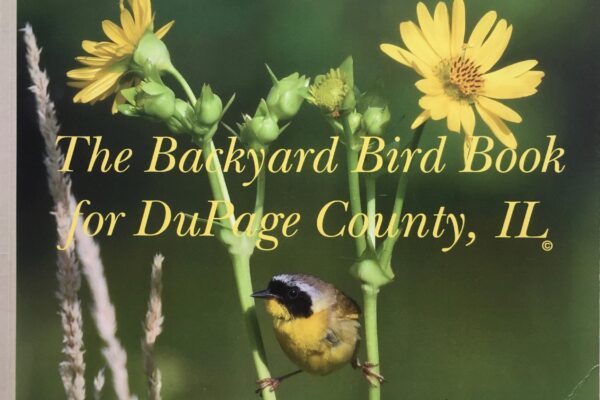
Each year I create a Family Calendar highlighting my best pictures of the year and distribute them at Christmas.
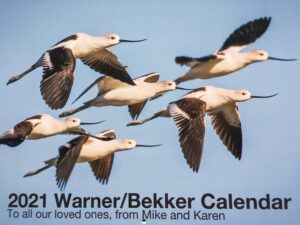
To me, bird photography makes my birding experiences even better.
10. You Experience God’s Beauty and Diversity While Birding
Being outside and gazing at some of the more than 10,000 species of birds while enjoying the natural beauty of the world around makes me feel closer to God. The Bible tells us that on the fifth day God said, “Let the water teem with living creatures, and let birds fly above the earth across the expanse of the sky” Genesis 1:20 (NIV). Isn’t it interesting that of all the types of animals in the world the first one the Bible specifically mentions is birds? No wonder we are drawn to them!
He didn’t make all birds the same, or even similar. There is such diversity within the Avian family it is awe-inspiring! From the smallest hummingbirds to the largest Ostrich:
The colors are amazing like the Scarlet-faced Liochicla and the Wood Duck:
They swim, fly and dive:
As a birder you become a part of a community with some very nice people. It connects you with your partner and family. You exercise your body and mind. It gets you out exploring places you never knew existed and immerses you in nature. As you learn more about birds and see their beauty and diversity, the more you are awed by them. Get out there and go birding! Experience the the wonders of God’s world!
Would you to learn more about GreatBirdPics? Perhaps share your bird photos with our members around the world? Receive regular emails about birding and bird photography? If so click ABOUT GREATBIRDPICS to learn more. If you would like to become a member click REGISTER.
All photos are Copyright 2021 by Mike Warner unless otherwise noted.
